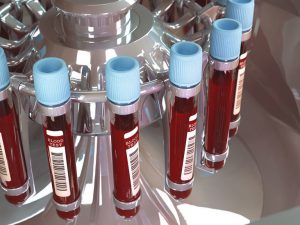
Nội dung bài viết / Table of Contents
This post is also available in: Tiếng Việt (Vietnamese)

Blood is made up of cells and plasma. The presence of antigenic components on the surface of red blood cells and plasma antibodies will determine the difference or similarity between individuals and will determine the corresponding blood type.
Each blood group has its own unique characteristics, in the practice of blood transfusion, in addition to testing standards to detect and prevent the spread of viruses by blood transfusion, we must also follow the basic principles. In terms of immune security, it’s not about letting antigens and antibodies meet.
Currently, science has found that there are more than 30 different blood types such as ABO, Rh, Kell, MN …, but ABO and Rhesus (Rh (D)) are extremely important because it has extremely strong immunogenicity.
The ABO blood system consists of 4 blood groups: A, B, O and AB with the distribution rate in the community varying by breed. In Vietnam, this rate is: group O approximately 42.1%, group B approximately 30.1%, group A approximately 21.2% and group AB approximately 6.6%.
Rh type: there are two types of blood group: Rh+ and Rh-. People whose blood group is Rh negative do not accept blood from the Rh positive group (except for the first blood transfusion because there are no anti-Rh+ antibodies).
In Vietnam, the proportion of people with Rh (-) blood group represents a very small proportion, around 0.04% – 0.07% of the population, so they are considered to have rare blood groups. Meanwhile, in Europe, America, Australia … this rate is much higher, accounting for around 15% – 40% of the population. People with rarity of the Rh- blood group are more at risk than people with other blood groups for reasons:
Firstly, when they need a blood transfusion (for example, due to an accident resulting in blood loss, emergency surgery …), it is not always available in this type of rare blood.
Secondly, if the mother has Rh (-) and the baby is Rh (+), the mother’s body will react to the baby’s blood as an external substance.
The mother’s body makes antibodies (proteins) against the baby’s Rh (+) blood and can cause mild to severe hemolytic symptoms. Incompatible rh can also cause problems in the mother’s next pregnancy, when maternal D antibodies (produced by the immune response of the previous pregnancy) may cross the placenta and attack the fetal red blood cells, causing hemolytic anemia in the baby, or may get worse leading to miscarriage.
Fortunately, if the incompatibility is detected early, doctors will apply prenatal treatment to help prevent the above symptoms. Therefore, pregnant women need Rh antigen tests, through which to detect and detect compatibility in the mother and the baby.
Thirdly, pregnant women with Rh (-) blood group who are pregnant with Rh (+) blood group may still have a blood transfusion event in the first Rh (+) blood group.
A blood transfusion is an operation that receives blood or blood products, including red blood cells, platelets and plasma from other people to store them in plastic bags and transmits them through a line attached to the attached needle in the vein of the person’s arm.
The blood transfusion does not cause pain but can cause slight discomfort to the recipient, each unit of blood will generally be delivered in 2 to 4 hours. Blood transfusions have been done in the following cases: reduction in blood volume, treatment of anemia, provision of several components of red blood cells, plasma transfusion for patients …
The principle of blood transfusion is not to let the antigen and the corresponding antibodies meet in the body. Therefore, it is important to determine the right blood group before transfusion. The blood group O is called a specialized blood group, which means that it can donate all types of blood but only receives blood with the same type O.
AB type blood is a blood group that accepts all types of blood, but only donate for people of the same AB blood group. People with type A blood can donate type O or type A blood, people with type B can get type O or B blood.
Very bad. An acute hemolytic transfusion reaction can occur within 24 hours of the blood transfusion and usually occurs during the blood transfusion. Patients may experience these reactions. Symptoms may include a burning sensation at the blood transfusion site, chills, fever, and pain in the back and sides of the ribs …. The reactions involve most intravascular hemolysis; red blood cells in the transfused blood are destroyed by the recipient’s antibodies in the blood vessel. Simultaneous reactions can cause shock and cause rapid death.
Modern hematology recommends giving patients the blood components they need blood products. Newly drawn blood unit, the blood will be separated into each component: red blood cells, platelets, plasma, coagulation. This technique allows maximum use of blood components.
Authors:
References: